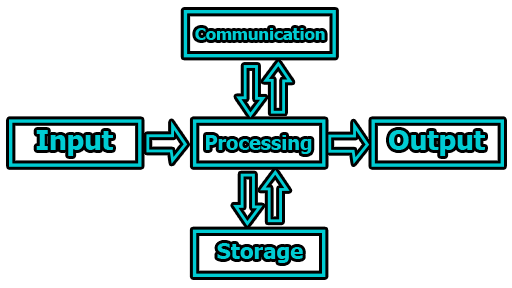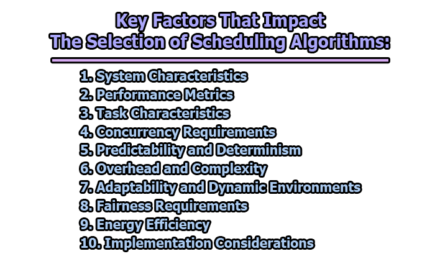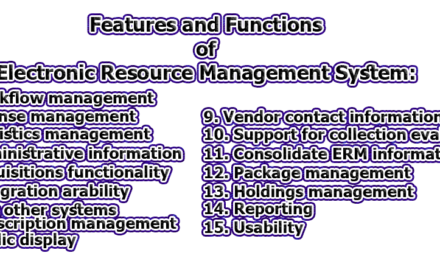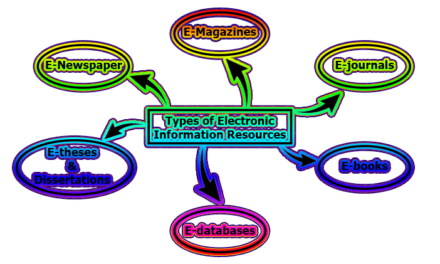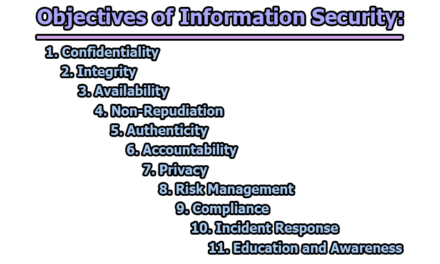Information Processing Cycle:
The Information Processing Cycle, also known as the Data Processing Cycle or the Information Processing Model, is a fundamental concept in computer science and information technology. It describes the sequence of steps that data goes through as it is processed and transformed into useful information. This cycle consists of five main stages: Input, Processing, Storage, Output, and Communication. In this article, we will delve into each stage, providing examples and explanations to help you understand the process thoroughly.
Stage 1: Input:
Input is the initial stage of the information processing cycle, where data is collected and entered into a computer system. Input can take various forms, including text, numbers, images, audio, video, and more. The goal of this stage is to capture raw data from the external environment and prepare it for further processing. Here are some common examples of input devices and methods:
1.1 Input Devices:
- Keyboard: Keyboards are commonly used for entering text and numeric data. Each key press generates a specific character or command.
- Mouse: Mice are used for pointing and selecting objects on the screen. They often have buttons that can trigger various actions.
- Scanner: Scanners are used to convert physical documents, such as photographs or written text, into digital formats.
- Microphone: Microphones capture audio input, allowing users to record and input sound.
- Touchscreen: Touchscreens are common in smartphones and tablets, enabling users to interact directly with the display by tapping and swiping.
- Barcode Reader: These devices read barcodes, which contain information about products or items.
1.2 Input Methods:
- Data Entry: Manually entering data into a computer, such as typing a document or filling out an online form.
- Sensors: Sensors in various devices (e.g., temperature sensors, GPS sensors) collect data from the physical world and input it into computer systems.
- Networks: Data can be inputted from remote locations via networks, such as the Internet, through methods like downloading files or receiving emails.
Example of Input: Consider a cashier at a grocery store. They use a barcode scanner to input product information at the checkout counter. When they scan a product’s barcode, the scanner captures the unique code, which represents the product and its price. This data is then sent to the computer system, which processes it to calculate the total cost of the items being purchased.
Stage 2: Processing:
Processing is the stage where the computer system performs various operations on the input data to transform it into meaningful information. This stage is often referred to as the “brain” of the computer, as it involves executing algorithms, calculations, and decision-making processes. Processing can involve both hardware (central processing unit or CPU) and software (programs and algorithms). Here are some key aspects of data processing:
2.1 Arithmetic Operations: One of the fundamental aspects of data processing is performing arithmetic operations on numerical data. This includes addition, subtraction, multiplication, division, and more complex mathematical operations.
2.2 Logical Operations: Logical operations involve making decisions based on conditional statements. For example, if-else statements in programming are used to determine which actions to take based on specific conditions.
2.3 Data Transformation: Data can be transformed in various ways during processing. For example, converting raw sensor data into meaningful units (e.g., converting temperature readings from Celsius to Fahrenheit) is a form of data transformation.
2.4 Sorting and Filtering: Data can be organized by sorting it based on certain criteria (e.g., sorting a list of names alphabetically) or filtering it to extract specific subsets of data (e.g., filtering a list of products to show only those with prices below a certain threshold).
Example of Processing: Imagine a spreadsheet program like Microsoft Excel. When you enter numerical data into a spreadsheet and perform calculations like summing a column of numbers or creating a chart based on that data, the software processes the input data to generate meaningful results. For instance, if you input sales data for a month, Excel can process that data to calculate the total sales, average sales, and generate visual representations like charts and graphs.
Stage 3: Storage:
Storage is the stage where processed data is saved or retained for future use. Data storage is essential because it allows information to be accessed and retrieved at a later time. There are various types of storage devices and technologies, each with its own capacity, speed, and purpose. Here are some common forms of data storage:
3.1 Primary Storage (RAM): Primary storage, also known as Random Access Memory (RAM), is used to store data and instructions that the CPU is currently processing. It provides fast access to data but is volatile, meaning data is lost when the computer is powered off or restarted.
3.2 Secondary Storage (Hard Drives, Solid-State Drives, Optical Discs): Secondary storage devices are used for long-term data storage. Hard drives, solid-state drives (SSDs), and optical discs (e.g., CDs, DVDs, Blu-rays) are examples of secondary storage. They offer non-volatile storage, meaning data remains even when the computer is turned off.
3.3 Cloud Storage: Cloud storage services, such as Dropbox, Google Drive, and Microsoft OneDrive, allow users to store data on remote servers accessible via the internet. This provides data redundancy and accessibility from multiple devices.
3.4 Flash Drives and External Drives: Portable storage devices like USB flash drives and external hard drives offer a convenient way to store and transport data.
Example of Storage: Consider a writer working on a novel using a word processing software like Microsoft Word. As the writer types, the text is temporarily stored in RAM (primary storage) to enable real-time editing. When the document is saved, it is transferred to secondary storage, such as a hard drive or cloud storage. This allows the writer to access and continue working on the document at a later time.
Stage 4: Output:
Output is the stage where processed data is presented to the user in a human-readable form. It involves displaying, printing, or otherwise presenting the information so that it can be interpreted and understood. Output devices are used to convey the results of data processing. Here are some common examples of output devices:
4.1 Monitors and Displays: Computer monitors, laptop screens, and other display devices are used to present visual information, including text, graphics, and videos.
4.2 Printers: Printers produce physical copies of documents and images. There are different types of printers, such as inkjet, laser, and 3D printers, each suited for specific printing needs.
4.3 Speakers and Headphones: Audio output devices, such as speakers and headphones, are used to convey sound and music.
4.4 Projectors: Projectors display images or videos on a larger screen or surface, often used for presentations and home theaters.
4.5 Braille Displays: Braille displays are designed for visually impaired users and provide tactile output by raising or lowering small pins to form Braille characters.
Example of Output: Imagine a financial analyst who uses spreadsheet software to create a financial report. After inputting and processing financial data, the analyst generates a report using the software’s formatting and charting tools. The report is then displayed on the computer monitor, allowing the analyst to review and analyze the financial information. Additionally, a printed copy of the report may be produced using a printer for distribution to colleagues or clients.
Stage 5: Communication:
Communication is the final stage of the information processing cycle, where data and information are shared and exchanged between different computer systems or users. This stage enables collaboration, data sharing, and the dissemination of information. Communication can occur through various means, both wired and wireless, and involves the use of networks and protocols. Here are some common methods of communication:
5.1 Wired Communication:
- Ethernet: Ethernet cables and switches are commonly used for wired communication within local area networks (LANs).
- USB: Universal Serial Bus (USB) connections allow for data transfer between devices like computers, printers, and external drives.
- Fiber Optics: Fiber optic cables transmit data using light signals and are used for high-speed, long-distance communication.
5.2 Wireless Communication:
- Wi-Fi: Wireless Fidelity (Wi-Fi) enables wireless data transfer within a local area, such as in homes, offices, and public spaces.
- Bluetooth: Bluetooth technology allows for short-range wireless communication between devices like smartphones, headphones, and speakers.
- Cellular Networks: Mobile devices use cellular networks to communicate with cell towers, enabling voice and data transmission over longer distances.
5.3 Internet Communication:
- Email: Email services allow users to send and receive messages and attachments over the internet.
- Instant Messaging: Instant messaging apps enable real-time text, voice, and video communication between users.
- Video Conferencing: Platforms like Zoom and Microsoft Teams facilitate video and audio meetings over the Internet.
Example of Communication: Consider an online shopping scenario. When a customer places an order on an e-commerce website, the order details, including the products selected and the shipping address, are communicated from the customer’s device to the e-commerce company’s servers via the Internet. The company’s servers process the order, and the confirmation, along with shipping updates and tracking information, is communicated back to the customer through email or notifications on their mobile app.
In conclusion, the Information Processing Cycle, consisting of Input, Processing, Storage, Output, and Communication stages, is a fundamental framework for understanding how data is transformed into information within computer systems. Each stage plays a crucial role in the overall process of collecting, processing, storing, presenting, and sharing data and information.
In the modern digital age, this cycle is pervasive and underpins virtually all computing and information technology applications. From personal computing and mobile devices to complex enterprise systems, the principles of the information processing cycle are at work, enabling us to create, manage, and exchange data and information more efficiently and effectively than ever before.
Understanding the Information Processing Cycle is essential not only for computer scientists and IT professionals but also for anyone who interacts with technology in their daily lives. It provides the foundational knowledge needed to navigate the digital world and make informed decisions about how to collect, process, store, output, and communicate information effectively and securely.

Library Lecturer at Nurul Amin Degree College

